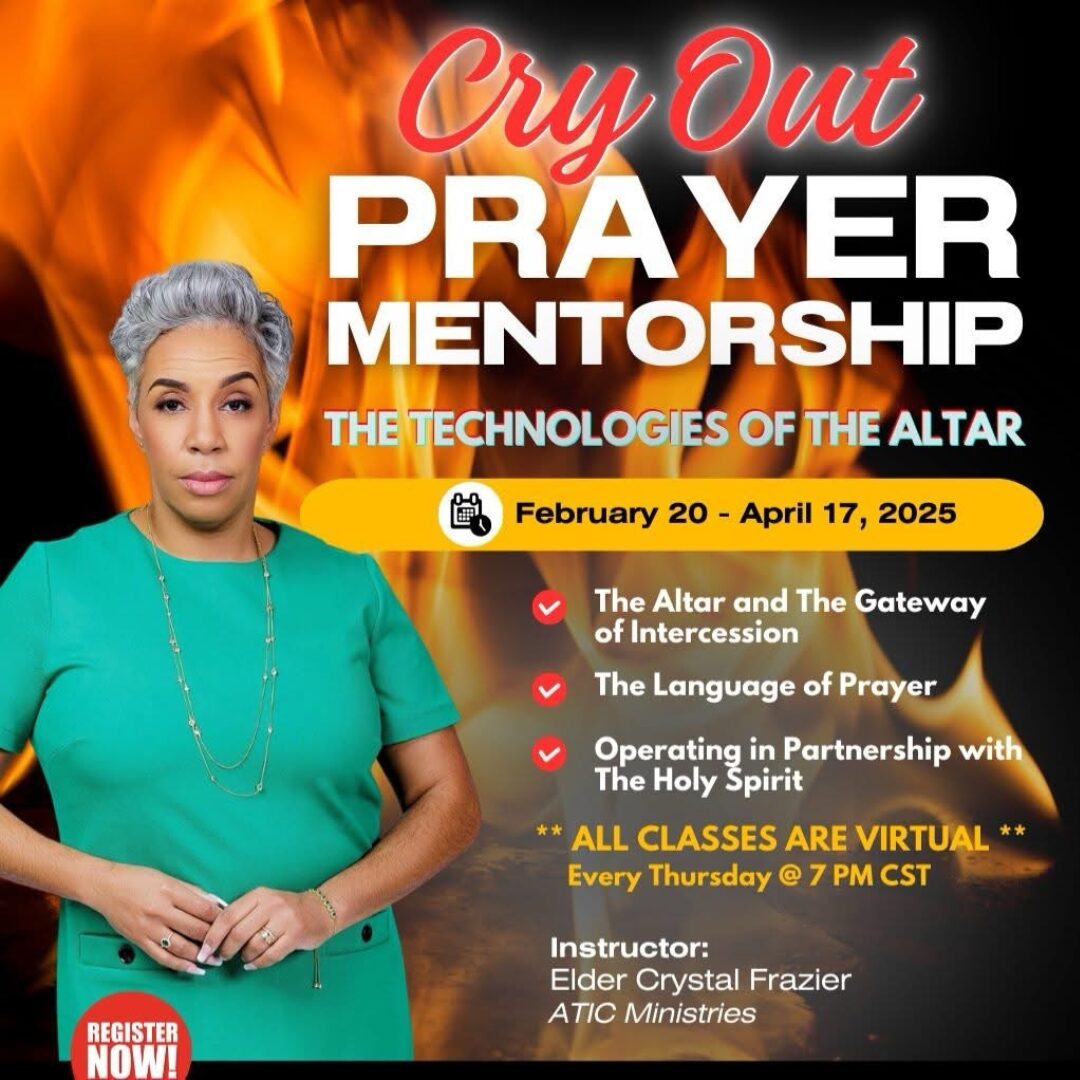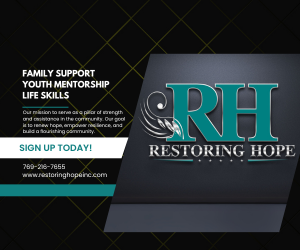You’re listening to Radio Health Journal, the trusted news source for medicine, science and technology. I’m Elizabeth Westfield. I’m Mayan Vastabetancourt.
And I’m Greg Johnson. This week, a curable disease that kills over one million people every year. We should be worried about an antibiotic-resistant form of tuberculosis that spreads throughout the world and becomes this terrifying superbug.
But first, the dangers of excluding pregnant women from clinical trials. Maybe in another 70 or 80 years, or perhaps less than that, it will seem just as antiquated to lack rigorous evidence about safety and efficacy during pregnancy. All that and more this week on Radio Health Journal.
I went hands-free with Skecher slip-ins. Join the millions of people who are celebrating going hands-free with Skecher slip-ins. Footwear you just step into and they’re on.
That’s right. You don’t have to bend down, and you don’t have to touch them, which is why people can’t stop talking. After trying Skecher slip-ins, I want all my shoes to have this technology.
So how do hands-free Skecher slip-ins work? It’s like they have an invisible built-in shoe horn so your foot slides into place. Then our heel pillow keeps your foot comfy and secure. And slip-ins are for the whole family—men, women, and kids—in all your favorite Skecher styles.
It’s crazy how something as simple as a pair of shoes have made my life better. I went hands-free with Skecher slip-ins, and I’m never going back. See what everybody can’t stop talking about.
Go hands-free with Skecher slip-ins at a Skecher store, skechers.com, or wherever stylish footwear is sold. We trust our medications to be effective and relatively safe because of the FDA’s rigorous approval process. However, the strict testing is a fairly recent practice that was spurred from a global tragedy just over 60 years ago.
The drug behind the scandal is called thalidomide. So thalidomide was a medication that was prescribed in several places, particularly in Europe in the 1950s, for conditions including treatment of nausea and vomiting of pregnancy. So what we might call morning sickness.
And it was effective at treating conditions, but it also caused terrible birth defects. So severe limb deformities and death in many cases. And we think that at least 8,000, probably more infants were affected with 3,000 deaths.
That’s Alyssa Belinsky, the Peterson Family Assistant Professor of Health Policy at Brown University. Even though the drug was never approved in America, the destruction it caused had profound effects on the FDA’s evaluation system. It strengthened the agency’s role in drug approvals and required manufacturers to prove the safety and efficacy in human trials.
But in part because we had this shadow of thalidomide hanging over us, this rigorous standard of evidence, even from the beginning, always made a special exception for pregnant women. Actually, initially all women of childbearing age and not just pregnant women were excluded from drug development, RCTs. And so this policy was relaxed in the 1980s, and by 1993 there became a requirement to include women in these trials.
But again, that was still quite recent. And to this day, even as women are included in drug development RCTs, our research published in the American Journal of Obstetrics and Gynecology emphasized that less than 1% of trials enrolling women 18 to 45 enroll pregnant participants. It might be less of an issue if the drugs were being tested in pregnant women after the initial human clinical trials, but that’s not the case.
In most instances, we have no idea how medications will affect this population because no one ever researches it. It’s important to mention that this hesitancy comes from a good place of wanting to keep mothers and babies safe. However, Belinsky argues that excluding this population has drastically limited scientific innovation.
So we are just starting to learn physiologically what actually causes nausea and vomiting during pregnancy. There’s a lot of things we still don’t know scientifically about pregnancy. So for example, we don’t really understand physiologically what causes the start of natural labor.
So we start by having real gaps in the basic science, and then companies that might be able to, for example, want to innovate on new medications are going to perhaps be more hesitant about developing innovations if they are working in these populations that are harder to research. So it’s a really interesting pipeline challenge to think about. Ultimately, this means that pregnant women today are left without drugs that have been proven to be safe and effective.
Many times, patients are having to weigh the benefits of taking certain drugs against the potential unknown risk to their pregnancy. And so in practice, two things happen. The first is that a lot of people choose not to take or prescribe medications when there is less evidence available.
So we do see a drop-off in medication usage during pregnancy. And that’s because people are worried about potential adverse effects. But pregnancy isn’t known for curing your asthma or curing your anxiety and depression.
And in fact, pregnancy can come with a whole host of other conditions. And so it puts us in a situation where we may not be treating conditions, even though it might be more dangerous not to treat them than to treat them for both mom and for baby. Though medication usage drops, most of this population still takes some sort of drug.
In fact, the CDC reports that 9 in 10 women use some sort of medication during pregnancy. And so the upshot is that a lot of people are still taking medications, about which we don’t have good data. And it’s just harder to learn about potential adverse effects in ad hoc, post-marketing surveillance studies compared to these really rigorous studies that typically are used to inform approval in the general population.
After presenting this work, Belensky is often approached by women who were inspired to share their own experience of navigating this dilemma while pregnant. In one case, a woman had to decide whether to stop taking depression medication that she had been successfully on for years because there was no evidence to determine if it was safe for pregnancy. Other people have told us about struggling to treat nausea and vomiting during pregnancy.
And I think this is an interesting case because it’s one that comes up a lot as, I think, maybe feeling less important. So people say, oh, you know, you can just tough out nausea and vomiting during pregnancy. And so one study that my colleague Natalia likes to point to is that there are estimates that last year alone, the US lost about 56 million days of work to pregnancy-related nausea and vomiting.
Which speaks to the economic impact this lack of research leads to. Now, even if clinical trials start enrolling this population, there’s a chance that these women don’t want to participate. However, Belensky’s new research asks this question, and the preliminary results have shown that while some are hesitant, there are others who would be excited for the opportunity.
People report being willing to participate when they are already taking a medication for a chronic condition. So that person that I mentioned who was trying to figure out whether to keep taking her depression medication, she told me, I kind of wished I could have enrolled in a trial because then at least someone else would have learned from my experience. I think we’re really grateful when people are willing to participate in clinical trials.
It’s never something that we would require someone to do, but we can think about the systems that we already have for making sure that research participants are protected as much as possible. The question of safety isn’t unique to this situation. It’s a consideration for every research participant, young and old, male and female.
The fact that clinical trials are the gold standard for research doesn’t dismiss the challenges or risks. But Belensky says it’s the best way we can learn about medications while exposing as few people as possible. To drive this point home, Belensky and her colleagues conducted research published in the Annals of Internal Medicine.
Their goal was to see what the impact would have been if certain drugs had been tested in pregnant women instead of excluding them from research. So the first case that we considered was thalidomide. And the reason that we considered it is not because we expect it to happen again, but because it looms so large as a reason for why we should be hesitant about doing research in pregnancy.
What we were able to show is that if we had done a trial, even if we hadn’t been able to detect these effects early enough to stop a trial early, and we’d finished a trial, we still would have averted about 99.6% of all birth defects that occurred. So then what would have been the upside of doing a trial? The upside of doing a trial would have been that having a medication to effectively treat nausea and vomiting during pregnancy would be incredibly beneficial and is something that we still struggle to treat effectively to this day. The team also included a much more recent example through looking at the COVID-19 vaccine.
Even though there were advocates for including pregnant and lactating women in this research, they were still left out. This forced the community to make a decision about receiving the vaccine without any evidence of how it would affect their health. Evidence that was available to anyone else who wasn’t carrying or breastfeeding a child.
And we were able to do some mathematical modeling to argue that if pregnant people had been included in trials, and as a result, there had been a moderate increase in uptake, we might have averted about 20% of maternal COVID-19 deaths and 8% of all maternal deaths from March to November of 2021, as well as 1% of stillbirths. The numbers there are inexact, but I think they’re useful for illustrating the scale of potential health benefits that we could potentially achieve by running randomized trials in pregnant people. Now this change won’t happen overnight.
There are a lot of logistics and moving pieces to figure out, but thankfully we have a good foundation to build off of. Part of our current testing standards includes a type of research called developmental and reproductive toxicology studies. The FDA currently requires most drugs to undergo these trials that specifically assess the drug’s effects on reproduction and development, often in animal models.
In addition, there are a few committees that have been focused on determining the best way to include pregnant and lactating women in research. And these include recommendations focused on changing some of the regulatory language and requirements, some logistical and funding recommendations, so providing more funding and adjusting grant timelines to account for slower enrollment of pregnant individuals. They also include thinking about different requirements or guidance that could be provided about the expectation that pregnant people should be, of when pregnant people should be included and what that inclusion could look like.
And though the progress is slow moving, Bilenski hopes we’ll soon look back on this period with the same astonishment as when we think about the lax safety and gender testing regulations from just a few decades ago. Remember what I talked about in the beginning, that it was only in 1962 that we started requiring companies to provide evidence that medications were safe and effective. And it was only in 1970 that that evolved into the gold standard we understand today.
And it was only in 1993 that women were required to be included. That was in the very recent past. All of these were in the very recent past.
And so our hope is that just like 70 or 80 years ago, we didn’t have any of the system that we have today, maybe in another 70 or 80 years, or perhaps less than that. All of these, it will seem just as antiquated to lack rigorous evidence about safety and efficacy during pregnancy. You can find more information about Alyssa Bilenski and all of our guests on our website, RadioHealthJournal.org. For more behind the scenes, follow Radio Health Journal on Facebook, Instagram, and X. Our writer producer is Kristen Farah.
Our executive producer is Amara Zaveri. I’m Elizabeth Westfield. Coming up, how can we prevent new strains of tuberculosis from forming? When Radio Health Journal returns.
It’s Macy’s Friends and Family Sale, which means if you’re shopping for summer, you can get insider deals on our best brands, even ones that aren’t usually on sale, like an extra 30% off Hugo Boss, Calvin Klein, Levi’s, and more. Plus, get 15% off Beauty and Fragrance. And with Father’s Day just around the corner on June 15th, it’s a great time to shop for dad.
Stop by Macy’s today and walk out with the perfect gift. Don’t miss Friends and Family. Ends Monday, only at Macy’s.
Savings off regular and already reduced prices. Exclusions apply. At Charmin, we heard you shouldn’t talk about going to the bathroom in public, so we decided to sing about it.
Charmin Ultra Strong. You can use less, better than the rest. Charmin Ultra Strong.
Your booty pass the clean test. Charmin weave texture, it’s the best. Study up, teach a lesson on fresh.
♪ Your booty pass the clean test ♪ ♪ Yes, sir ♪ ♪ Charmin Ultra Strong ♪ ♪ Charmin Ultra Strong with diamond weave texture ♪ ♪ Cleans better than the leading one-ply brands ♪ ♪ So you can use less, enjoy the go with Charmin ♪ Many people know John Green as their favorite fiction author who’s had multiple novels made into hit Hollywood movies. His 2012 book, The Fault in Our Stars, is one of the best-selling books of all time, selling over 23 million copies by 2021. It’s the story of two teenagers with cancer who fall in love.
However, these fans may be surprised to discover that the success of The Fault in Our Stars wasn’t an endpoint, but rather a springboard for Green’s other passions. First off, it allowed me to be more financially supportive of causes I care about, like Partners in Health, an organization that has helped Henry a lot and helped hundreds of thousands of other TV survivors. But secondly, it allowed me a lot of creative freedom.
It allowed me the freedom to pursue what I want to write about and write the kinds of books I want to write. You know, The Fault in Our Stars was the book that I felt deeply compelled to write when I wrote it, and Everything is Tuberculosis is the book that I felt deeply compelled to write this time around. Everything is Tuberculosis is the title of Green’s new nonfiction book.
It has a quirky title for a reason. My wife often jokes with me that, in my mind, everything is about tuberculosis, and tuberculosis is about everything, and that’s very true. Like, history is tuberculosis, geography is tuberculosis, colonialism is tuberculosis, literature, art, art criticism, it’s all TB.
And so when I look at the world, I really do look at it through the lens of tuberculosis. Every year, over one million people die of this entirely curable disease. The problem, Green says, is that in many places where TB occurs, the medicines to cure it are not available.
Because I travel a fair amount and spend a lot of time with people living with tuberculosis, I do get tested pretty regularly, and I’ve never had a positive test. But the thing is, if I do, this is a curable and preventable illness. And so if I do, I would get preventative therapy and have no problem clearing the infection from my body.
This is what I find so frustrating about tuberculosis, is that someone like me can regularly access testing, can regularly access treatment if I need it, and I don’t have anything to fear from tuberculosis, really. But for so many people, that’s just not the case. Such as for Green’s friend, Henry Ryder, a young man with TB living in Sierra Leone, a country in West Africa.
I met Henry in 2019 when I visited Luká government hospital, the only TB hospital in Sierra Leone. And I was taken around the hospital by this lovely young boy who shared the same name as my son. And I was immediately charmed by him.
He’s extremely charismatic. He was like the mayor of that hospital. Everywhere he went, people were shaking his hand and rubbing his head.
And he took me to the kitchen and took me to the lab and took me to the wards. And eventually we made our way back to the doctors I was traveling with, and they kind of shooed him away in a loving fashion. And I said, whose kid is that? Because I figured he had to be the child of a healthcare worker.
And the doctors explained that in fact he was a patient and he was one of the patients they were very concerned about. Because while he was responding with the antibiotics, that’s why he was able to walk around and be relatively healthy. They could tell from the tests that he wasn’t responding well enough and that his TB would inevitably come back.
While Henry appeared young, he was actually 17 years old. His small stature was due to malnourishment as a child and contracting TB didn’t help. The doctors were confident that his disease would return because Henry had a complicated form of drug-resistant tuberculosis.
Henry needed really a personalized, tailored treatment for just his tuberculosis. You know, anybody in the United States should expect to receive such personalized, tailored treatment, but in Sierra Leone, it was much harder. Henry was incredibly fortunate to have a doctor, Dr. Jerome Taffera, who simply would not give up on him and consulted with physicians at Harvard and all around the world to try to find a drug regimen that would work for him and then convince the Sierra Leonean Ministry of Health to approve those drugs so that Henry could receive them.
But Henry didn’t receive them. As expected, his symptoms worsened. The swollen lymph nodes in his neck and shoulder burst through his skin, leaving open wounds.
Once his best friend at the hospital died, Henry believed he was next. But if proper treatments to cure the disease existed, why didn’t Henry and his friend get them? Green says the life and death decision came down to one thing, money. My friend Henry’s tuberculosis cost about $900 to cure, and he was repeatedly told it wasn’t cost-effective to treat his TB because that $900 was simply too much money and that it was better to focus on prevention efforts.
Well, my little brother had cancer two years ago, and even though his cancer was very curable, it still would be more cost-effective to focus on prevention efforts. We know that, like, preventing cancer is cheaper than treating cancer, and yet nobody said to Hank, like, I’m sorry, but we can’t treat your cancer because it’s more cost-effective to prevent cancer. That’s true, it is more cost-effective to prevent cancer, but we should be doing both.
And there’s an expectation that we should provide care alongside preventative services, and I think that expectation is fair and appropriate and shouldn’t only be fair and appropriate in wealthy resource settings. The great news is that the Sierra Leone Ministry of Health finally did approve appropriate treatment for Henry. Within a few weeks, he recovered well enough to go home.
Henry spent years in that hospital, and those are years that he should’ve been in high school, he should’ve been able to pursue educational opportunities. He knew how important education was to someone like him, you know, living in poverty in a low-resource community. You know, he knew how much education could make the difference for him, and he knew what it meant to lose those years.
Now, because he’s an extraordinary kid, he’s been able to finish high school, and now he’s a college student at the University of Sierra Leone studying human resources and management, and he’s very successful and doing really well and about to enter his senior year. But a lot of things had to break in Henry’s direction for that to be the nature of his story. He had to have a lot of support, and that should be everyone’s story.
Everyone who gets tuberculosis should receive the kind of care that Henry eventually received, and they shouldn’t have to wait years for it. Here in the U.S., officials document 10,000 cases of active tuberculosis every year. In 2022, 565 Americans died of TB-related causes.
Still, the U.S. has some of the lowest rates of TB in the world, but while it’s both curable and preventable, it continues to be a global health problem. Green argues that this is a direct result of selective awareness. Reasons include inequitable access to healthcare, late diagnosis, and non-adherence to treatment.
Developing the cure for tuberculosis is one of the most impressive things we’ve ever done as a species. And we did it because we oriented all these resources around trying to develop new lines of antibiotics. And between 1945 and I think 1965, we developed seven or eight lines of antibiotics that can treat TB.
And then between 1965 and 2012, we developed none because we just stopped being interested in it. When it ceased to be a problem in the rich world, it sort of ceased to be an area of pharmaceutical development and that’s part of the reason why we’re so far behind the curve when it comes to drug resistance. Without updated antibiotics, the new drug-resistant strains of TB are thriving.
About one third of international donor funding for the disease comes from USAID, which recently experienced major funding cuts and layoffs. Green says that as a result, tens of thousands of people with TB will die and new forms of drug-resistant TB are likely to form. We should be worried about an antibiotic-resistant, totally antibiotic-resistant form of tuberculosis that spreads throughout the world and becomes this terrifying superbug.
But for many people, for over a billion people, the superbug era is already here because they don’t have access to the treatments that you or I would have access to. And they don’t have access to the cure. And so I think we should worry partly because we have an obligation to our fellow human beings to value all human lives the same.
Green’s latest book, Everything is Tuberculosis, is available now in bookstores and online. You can find more information about John Green and all of our guests on our website, radiohealthjournal.org. For more behind the scenes, follow Radio Health Journal on Facebook, Instagram, and X. Our writer-producer this week is Polly Hanson. Our lead producer is Kristen Farrah.
Our production manager is Jason Dickey. I’m Greg Johnson. Radio Health Journal returns in just a moment.
When you switch to Progressive and bundle your home and auto, you could save hundreds, and that’s a surprising amount of money. Whoa, that’s like farmer’s market money. That’s like give me a gallon of that locally sourced raw honey money.
That’s certified organic heirloom tomatoes in every imaginable color except red money. That’s let’s get two pounds of pink oyster mushrooms money. I’m not even sure I like pink oyster mushrooms.
Guess it’s time to find out because you could save hundreds when you switch to Progressive and bundle. Then the world is your pink oyster mushroom. Progressive Casualty Insurance Company affiliates and other insurers not available in all states.
You ever try fixing your car and realize you’re missing that one part? Yeah, been there. That’s why eBay’s my go-to. They’ve got millions of parts guaranteed to fit.
I’m talking brake pads for when yours have seen one too many miles of stop and go. Oil filters, because you don’t mess around with your engine care. Even got this cold air intake on my watch list, I might just go for it to keep the ride cool and your DIY streak hot.
Find all the parts you need at prices you love. Guaranteed to fit every time. eBay, things people love.
Eligible items only. Exclusion supply. Okay, raise your hand if you want to make your life a little bit easier.
Great. Now raise your other hand if you like to be comfortable. Perfect.
Now that you have both hands raised, imagine putting on your shoes. And that folks right there is your answer to an easier, more comfortable life. Go hands-free with Skechers Slipp’ns.
This is footwear you don’t need your hands to put on. They can be raised in the air and you can just step it and go. Why don’t you experience what people can’t stop talking about? Life-changing Skechers Slipp’ns.
Get your Slipp’ns at a Skechers store, Skechers.com, or wherever stylish footwear is sold. Shop the Sherwin-Williams 4-Day Super Sale and get 40% off paints and stains June 6th through the 9th. With prices starting at $29.39, it’s the perfect time to transform your space with color.
Whether you’re looking to revamp your interior or exterior, we have you covered with bold hues, soothing neutrals, and everything in between. Shop the sale online or visit your neighborhood Sherwin-Williams store. Retail sales only, some exclusions apply.
See store for details. Medical notes this week. A diabetes drug may be helpful in the fight against Alzheimer’s.
Research in the journal JAMA Neurology reveals a connection between two glucose-lowering medications and a lower risk of Alzheimer’s. The drugs may have protective effects for the brain and could slow cognitive decline in dementia patients. Researchers are now looking at who would most benefit from this treatment and what safety concerns could arise.
A tiny part of the brain may be the key to treating addiction. Researchers have been looking at a microstructure of gray and white matter. It’s been an understudied region of the brain, but is actually a highly complex command center.
It even helps regulate emotions and cognitive behaviors like depression and stress. Scientists are now trying to use drugs to target this brain region and help stop addiction. And finally, kids should join a sport to boost their mental health.
Scientists surveyed more than 800 kids ages six to 18. They noticed that physical activity seemed to protect young children from feeling depressed. While there’s a brief break in this correlation in participants age 10 to 14, the conclusion is clear.
Increasing your physical activity is a simple and effective way to protect against depression. And that’s Medical Notes this week. I’m Mayan Vastabetancourt.
It’s Macy’s Friends and Family Sale, which means if you’re shopping for summer, you can get insider deals on our best brands, even ones that aren’t usually on sale, like an extra 30% off Hugo Boss, Calvin Klein, Levi’s and more. Plus, get 15% off Beauty and Fragrance. And with Father’s Day just around the corner on June 15th, it’s a great time to shop for dad.
Stop by Macy’s today and walk out with the perfect gift. Don’t miss Friends and Family. Ends Monday, only at Macy’s.
Savings off regular and already reduced prices. Exclusions apply. On your period, sudden gushes happen without warning.
But now you can say goodbye to stand up gush fears. Thanks to Always Ultra Thins with rapid dry technology. It absorbs gushes two times faster than the leading store brand and gives you up to 100% leak-free protection.
Hello, clean and comfortable. With always, fear no gush. Thank you for joining us this week and every week as we break down the science stories you need to know.
You can find all of our past segments and guests on our website, radiohealthjournal.org or wherever you listen to podcasts. Follow us on Instagram, Facebook and X for daily content and tune in next week for another edition of Radio Health Journal.














